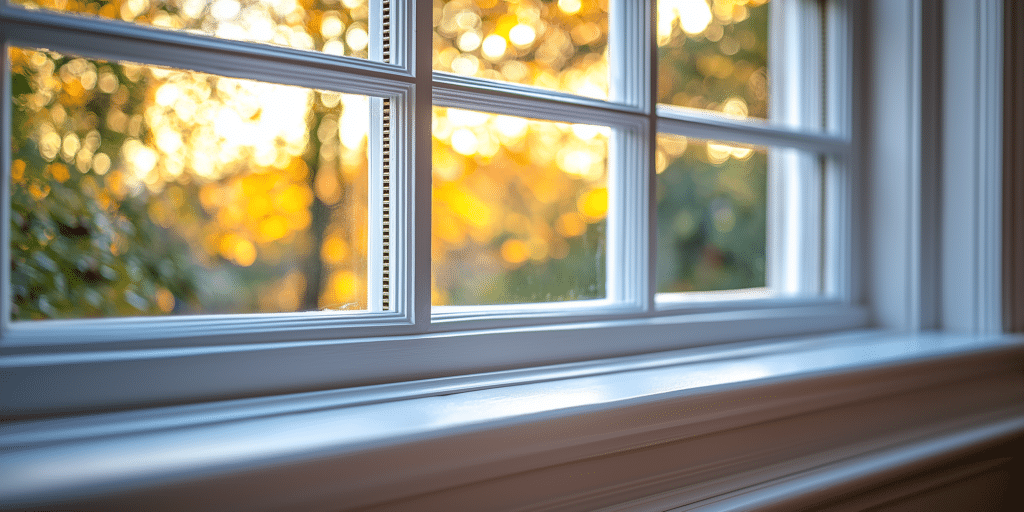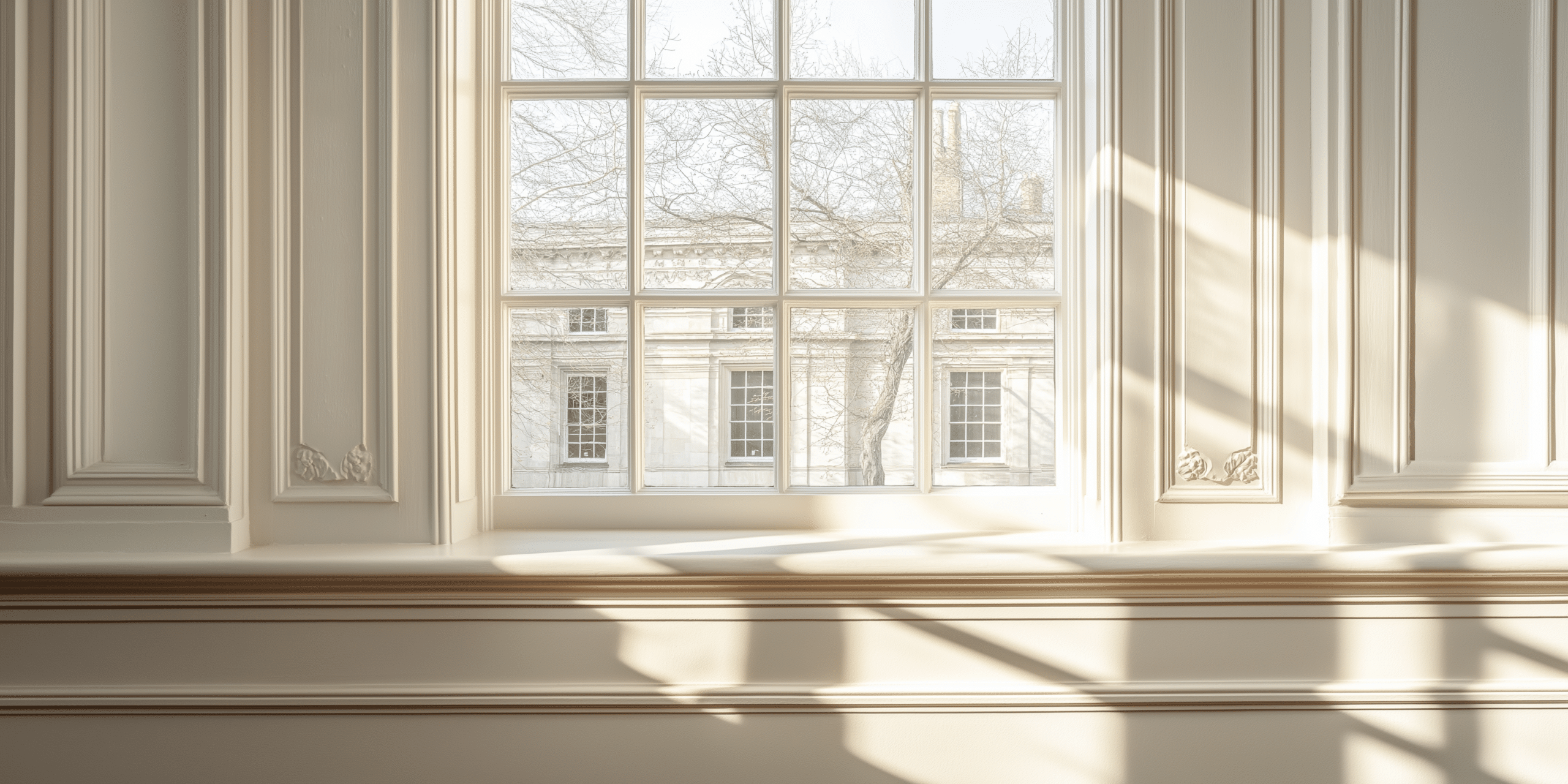Introduction to Sash Window Spacer Bars

Why Spacer Bar Material Matters
The material of your spacer bars significantly impacts their performance, particularly in terms of thermal conductivity and condensation prevention. But how do different materials compare?
- Thermal conductivity refers to a material’s ability to conduct heat. Spacer bars with low thermal conductivity, such as those made from composite materials, are better at preventing heat loss. Warm edge spacers can reduce U-values to as low as 1.0 W/m²K, significantly impacting home heating costs.
- Aluminium is durable and strong but has higher thermal conductivity, which can lead to more heat loss. Composite spacer bars, on the other hand, offer better insulation, with some achieving up to 45% better thermal performance compared to traditional metal spacers.
- Stainless steel spacer bars provide a balance between durability and thermal performance, offering a middle ground between aluminium and composite materials.
- Spacer bars with warm edge technology are designed to improve thermal performance by using materials with lower thermal conductivity, reducing the risk of condensation. Ventrolla emphasises that this technology is crucial for preserving the aesthetics and functionality of period sash windows while enhancing energy efficiency.
The Impact of Spacer Bars on Condensation Prevention
Condensation can be a significant issue for sash windows, leading to problems such as mould growth and wood rot. So, how do spacer bars help in preventing condensation?
- Condensation occurs when warm, moist air inside your home comes into contact with the cold surface of the window pane, causing the moisture to condense into water droplets.
- Spacer bars designed with low thermal conductivity can help reduce the temperature difference between the inside and outside panes, minimising the risk of condensation. Their double seals and warm edge spacers ensure maximum security and prevent glass removal, which is crucial for high-quality sash windows.
- Materials like composite or warm edge technology reduce thermal bridging, which in turn helps to prevent condensation from forming on the glass.
- Preventing condensation is crucial for maintaining the longevity of your sash windows, as it helps to avoid issues like mould, rot, and damage to the window frames.
Spacer Bars and Energy Efficiency

Energy efficiency is a top concern for many homeowners, and the right spacer bars can make a significant difference. But how exactly do they contribute to energy savings?
- The U-value measures the rate of heat transfer through a window. Spacer bars with lower thermal conductivity can reduce the U-value, improving the window’s overall energy efficiency. Duralite spacer bars, for example, provide up to 90% better thermal performance than aluminium spacers.
- By reducing heat loss through the windows, efficient spacer bars can lower your heating bills and reduce your home’s carbon footprint.
- Spacer bars with warm edge technology are specifically designed to minimise heat transfer, making your windows more energy-efficient.
- Spacer bars help to maintain a consistent temperature inside your home by reducing the rate of heat transfer through the window panes, which is essential for good insulation. Window Wise mentions that their choice of warm edge spacer bars plays a significant role in reducing thermal bridging, leading to lower energy bills and a more comfortable home environment.
Comparing Spacer Bar Materials: Aluminium, Stainless Steel, and Composite
Choosing the right material for your spacer bars is essential for balancing durability, thermal performance, and cost. How do the different materials stack up?
- Aluminium is strong and durable but has higher thermal conductivity, which can lead to increased heat loss.
- Stainless steel offers a compromise, providing good durability and moderate thermal performance.
- Composite materials often have the lowest thermal conductivity, making them the most efficient option for energy savings. Sashed suggests that their slimline spacer bars maintain the appearance of single glazing while ensuring modern energy efficiency, with U-values as low as 1.3 W/m²K.
- Consider factors such as the climate you live in, your home’s insulation needs, and the longevity you expect from your windows.
The Role of Spacer Bars in Double Glazing
Spacer bars are particularly important in double-glazed sash windows, where they help to maintain the insulating air gap between the two panes of glass. But what specific benefits do they provide in this context?
- They keep the panes of glass at an optimal distance, maximising the insulating effect of the air or gas between them. The careful selection of spacer bars is crucial in preserving elegance while enhancing the energy efficiency of period sash windows.
- The air gap acts as an insulator, slowing down heat transfer and improving the window’s overall energy efficiency.
- Using high-quality spacer bars can prevent the seal from breaking down, which would otherwise allow moisture to enter and compromise the insulation.
- By maintaining the air gap between the panes, spacer bars can also help reduce noise transmission, making your home quieter.
Installation Tips for Sash Window Spacer Bars

Installing spacer bars might seem like a daunting task, but with the right tools and guidance, it can be straightforward. What should you keep in mind during installation?
- Basic tools include a tape measure, screwdriver, and glazing tools, but you may also need specialised equipment depending on the spacer bar material.
- Proper alignment is crucial for maintaining the insulating air gap and ensuring that the windows function correctly.
- Avoid cutting corners on measurements or using incorrect tools, as this can lead to poor performance and reduced energy efficiency.
- Professional installers have the experience and tools needed to ensure that spacer bars are installed correctly, maximising their benefits.
Maintenance and Longevity of Spacer Bars
Once installed, spacer bars require minimal maintenance, but proper care can extend their lifespan. What should you do to keep them in good condition?
- Regular inspections, ideally once a year, can help you catch any issues before they lead to more significant problems. Window Fitters advises that annual checks can prevent long-term issues and maintain energy efficiency.
- Look for signs of corrosion, warping, or gaps between the spacer bar and the glass, which can indicate that the spacer bar is no longer performing effectively.
- In many cases, spacer bars can be replaced without the need to install new windows, although this depends on the specific window design. Ventrolla suggests that this is especially true for heritage windows, where maintaining the original frames is crucial.
- Ignoring problems with spacer bars can lead to increased energy bills, condensation issues, and even damage to the window frame and glass. Timely maintenance can save both energy and repair costs, making it a wise investment.
Advances in Spacer Bar Technology
Spacer bar technology has come a long way in recent years, with new materials and designs offering improved performance. What are the latest developments?
- Warm edge spacer bars use materials with low thermal conductivity to reduce heat loss and improve energy efficiency. These spacers are crucial in achieving a U-value of 1.0 W/m²K, which significantly enhances thermal performance.
- Insulated spacer bars include additional layers of insulation, further enhancing their thermal performance. Sashed mentions that these advanced spacers are particularly effective in period properties, where both aesthetics and energy efficiency are important.
- In some designs, spacer bars are used in conjunction with gas fillings like argon to improve the insulating properties of double-glazed windows. Bereco explains that these gas fillings work with the spacer bars to create a thermal barrier that significantly reduces heat transfer.
- ome manufacturers are now offering spacer bars made from recycled materials, reducing the environmental impact of your windows. These options are particularly appealing to homeowners looking to reduce their carbon footprint while maintaining high energy efficiency standards.
Choosing the Right Spacer Bars for Heritage Sash Windows

Heritage sash windows require careful consideration when it comes to spacer bars, as the wrong choice can compromise both aesthetics and performance. How do you balance these needs?
- For listed buildings or those in conservation areas, maintaining the original appearance is often a requirement. Using historically accurate materials and designs, including spacer bars, is crucial to preserving the window’s appearance and complying with regulations.
- They must be chosen carefully to match the original design while also providing modern performance benefits. Slimline or warm edge spacer bars can often be used in heritage windows without compromising their traditional look.
- Options like stainless steel or composite materials can offer a balance between maintaining the window’s traditional look and improving energy efficiency. Authentic Timber Windows highlights that these materials are often chosen for their ability to blend with aesthetics while enhancing thermal performance.
- Consider slimline spacer bars that are less visible and designed to blend in with the window frame. These options ensure that the window retains its original character while benefiting from modern advancements in window technology.
Cost Considerations: Balancing Budget and Performance
When selecting spacer bars, it’s important to balance cost with the performance benefits they provide. What factors should influence your decision?
- Aluminium spacer bars are typically more affordable, while composite and warm edge technology options may cost more but offer better performance. Opting for premium spacer bars can reduce long-term energy costs, making them a sound investment.
- In many cases, the energy savings and improved comfort provided by high-quality spacer bars justify the higher initial cost. Over time, these savings can offset the initial investment, making high-quality spacer bars a cost-effective choice.
- Over time, the reduced energy bills can offset the higher cost of premium spacer bars, making them a cost-effective choice. Bereco notes that high-quality spacer bars can contribute to a U-value as low as 0.8 W/m²K, which is a significant improvement over standard options.
- Some regions offer financial incentives for improving home energy efficiency, which can help cover the cost of upgrading your spacer bars. These incentives can make it more affordable to choose high-performance options that will provide long-term benefits.
Final Thoughts on Sash Window Spacer Bars
Spacer bars might seem like a small detail, but they play a crucial role in the performance and longevity of your sash windows. By choosing the right spacer bars and ensuring they are properly installed and maintained, you can significantly improve the energy efficiency, comfort, and value of your home.
They impact everything from energy efficiency to condensation prevention, making them a key component in your window’s overall performance. To make an informed decision, consider the material, thermal conductivity, and compatibility with your window type. Sashed recommends that homeowners focus on materials that balance aesthetics with energy efficiency, particularly for period properties.
Regular maintenance and choosing high-quality materials can help you maximise the lifespan and effectiveness of your spacer bars. Ensuring that professionals install them can also enhance their performance and longevity. If you’re considering upgrading your windows, start by exploring the different spacer bar options and consulting with a professional to find the best solution for your home.




